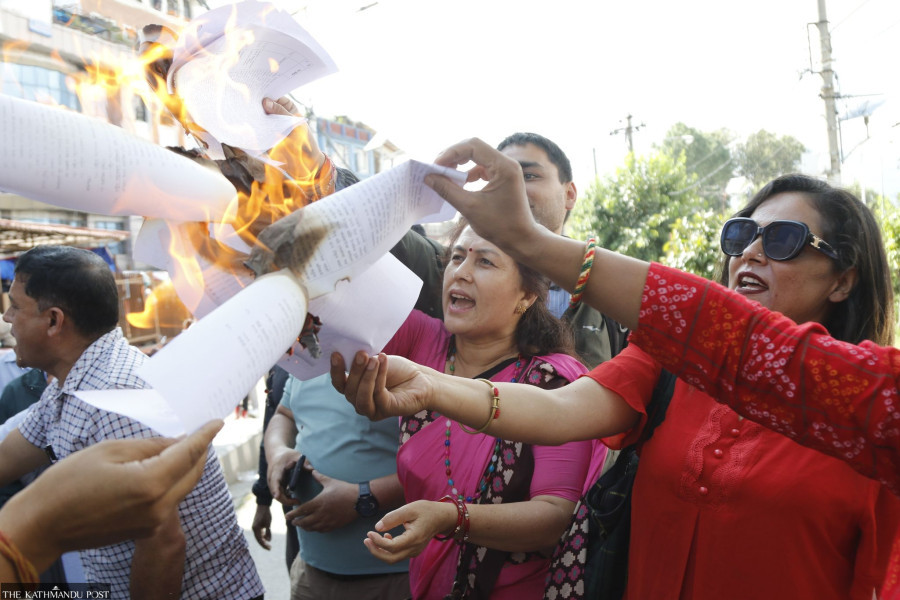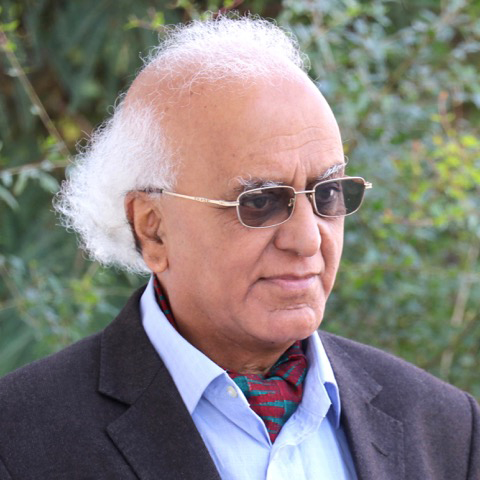Columns
Between politics and education
Political parties will harm education if they continue using students and teachers for politics.
Abhi Subedi
Political engagement of Nepali teachers and students has become a highly debated subject recently. Ironically, people who run political parties and governments in a multiparty system have raised this topic on different occasions. Lately, the well-meaning, young and intelligent Education Minister Sumana Shrestha has cast ripples by proposing to strictly bar teachers from directly engaging in political activities and holding their jobs at educational institutions simultaneously.
Political leaders and government ministers have put forward ambivalent proposals to keep academic institutions and pedagogy free from party activism. Educational institutions became highly politicised after the fall of the Panchayat. But to borrow from the English poet TS Eliot’s poem “Gerontion”, Nepali history has many “passages, contrived corridors”.
The political engagements of the students during the Panchayat regime influenced the activities of teachers’ unions. Teachers’ allegiances to political parties and proactive engagements have begun to be treated as an important public sphere. The public sphere of education became the bastion of such political activities. Some discussion about that is in order.
The parties banned from openly working during the Panchayat era found the students and their organisations the most effective sources of spreading their ideas in society. The students had all the necessary accoutrements for running an organisation like holding free elections by upholding free multiparty ideas. The students’ unions were shaped in a multiparty pattern. The political leaders that held sway during that period found these unions the most useful tools for spreading their ideas. The students had unions, free forums, occasional seminars and multiparty contestations. They were broadly divided between what became familiar as binary in Nepali politics, the Nepali Congress and the Nepal Communist Party. Apart from a few organisations that followed the binary espoused by the students, the teachers had weak functioning, open party-oriented organisations. The teachers engaged in creating unions in the multiparty order towards the last days of the Panchayat rule.
The political parties realised that the best forums to promote or propagate multiparty ideas were those of the students and, in some cases, the teachers’ unions. That practice was hegemonised after the fall of the Panchayat. It became so accepted a norm of the hegemony, as defined by the Italian thinker Antonio Gramsci, that nobody questioned the effectiveness and validity of the political organisations of students and teachers; they became a subject of acceptance. They worked hand in glove with these organisations. Parties even used them as hugely useful propaganda machinery. This hegemony almost wrecked educational institutions when politically proactive teachers openly worked for the political parties. The students, too, started working openly for the parties.
After 1996, the practice continued under a different condition. The students who followed the Maoist party line became militant, and several went underground. Some teachers were sympathetic to the Maoists and worked for them. Such is the genesis of the influence of politics in educational institutions in Nepal. My experience says it is important to look at the students' political inclinations by placing them in a historical order. I want to put forth some visceral narratives.
Recalling my student days today as a professor emeritus is revealing for two reasons. One, the debate about the political activism of teachers and students has occupied the minds of politicians and educationists today. Two, this debate has a long history and legacy. It started when King Mahendra dissolved the people's elected parliament in 1960 and introduced the Panchayat system.
It was in the early days of the Panchayat that I joined colleges. First, I enrolled in the Intermediate of Arts at Morang College, Biratnagar, after the School Leaving Certificate. At that time, students found it convenient to form unions along party lines. As a college student, my problem, like those of my contemporaries, was to work with a double consciousness that involved balancing my studies with my political activism, which was not an easy task but an exciting experience. When I joined the Bachelor of Arts at Mahendra College of Dharan, I became politically active and got elected as general secretary of the left-oriented student union. Out of the union, we created a small cohort of Trotskyites involving little over a dozen of us. We even fled to India, crossing the thick charkose forest on foot, and got badly beaten up and detained after we returned. However, even in those circumstances, I continued my studies and did well in the final examination. But I maintained what I would like to call the double bind the whole time.
Importantly, during our political activism, we did not meet any political leaders. I was influenced by the writings of BP Koirala, Pushpalal Shrestha and Manmohan Adhikari, but I met none of them. That was the pattern of student political activism. It is entirely wrong to say that students who espoused multiparty ideas always followed the instructions of political leaders.
When I came to Kathmandu to study the Master of Arts in English, I realised that my double bind entered a new phase. I came to the capital with a blank mind after my political leanings were gone. The strange visitors mostly from the West who came to Kathmandu began to fill the blank of my mind. They were known as hippies. That is a different story. I also became the culture secretary at Kirtipur Union.
Today, when we are talking about keeping the institutions free from political activism, we should treat students' aspirations in politics as something different from those of the teachers. I support the minister's efforts to keep educational institutions from becoming the bastions of political parties. I acknowledge that the students and some of their unions have been playing as tools of the political parties and have crossed the limits of the educational norms once in a while. Students whom I have known as colleagues and as teachers for over half a century have a great history of fighting for freedom and academic accomplishments. Students should keep up that great tradition.
Teachers, the custodians of education, should stop becoming the cadres of political parties. The political parties and organisations will do great harm to education if they continue to work with the old temptation of using students and teachers for their politics. We are acting at a time when the double binds of students and teachers need to be prudently and creatively used.




 11.12°C Kathmandu
11.12°C Kathmandu














